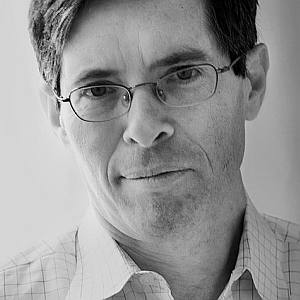
Roger Lowenstein is the author of six nonfiction books, including his latest, American’s Bank: The Epic Struggle to Create the Federal Reserve. A former Wall Street Journal reporter, he is known for his ability to turn complex financial events into readable stories. His other books range from a biography of Warren Buffett to several contemporary histories of financial crises and the stock market, including When Genius Failed, Origins of the Crash, While America Aged, and The End of Wall Street. Lowenstein’s work has also appeared in publications including Bloomberg, The New York Review of Books, Fortune and The New York Times Magazine.
His current book is his first work of historical nonfiction. He sat down in Boston with freelance writer Ricki Morell to speak about the joys and challenges of writing America’s Bank, which begins in 1858, around the time of the birth of Carter Glass, the Virginia politician who helped push through Congress the Federal Reserve Act and who later became co-author of the still-debated Glass-Steagall Act. It ends in December 1913 when President Woodrow Wilson signs the Federal Reserve Act into law.
Following is an edited and condensed version of their conversation:
Your research for this book took you to historical archives around the nation. How does working with primary source documents compare with interviewing live sources for information?
In the contemporary histories, you’d be dealing with interviews, and here you’re dealing with archives. You see your main sources writing over and over again, and you get a sense of their characters. You make judgments about what motivated them or what was weighing on them. So the archival material can fulfill the same purpose as the interview. I was surprised at how frequently people wrote letters, how much they wrote and how much of their feelings they revealed. For example, Carter Glass was a very suspicious—to the point of being paranoid—fellow. And that came out in every letter. He was always breathing fear and mistrust and wariness.
Obviously, you can’t interview Woodrow Wilson, and you can’t interview people who knew Woodrow Wilson, because no one is alive now. But you can hear Wilson’s contemporaneous feelings about the Federal Reserve bill through his letters. For example, legislative activity around the bill climaxed in the summer of 1913 in Washington, which was, before air-conditioning, a hot town in summer. Political spouses would leave, and so Wilson’s wife spent the summer in New Hampshire, and he’s writing to her, and you have access to his thoughts and feelings about the bill as he writes his wife. That’s the sort of material you wouldn’t have access to nowadays. But, of course, you also can’t interview Wilson’s aide who came in and said, “The President was angry and told us all to go to hell,” or whatever, so there are things you miss and things you get.
When you’re looking through difficult-to-access documents in official archives, what is your strategy to make sure you get the most information in the most efficient manner?
When I became a foreign correspondent for The Wall Street Journal, my editor said that when you’re sent off to some remote part of South America and you find your source, you’re not going to go back, so you’ve got to get it the first time. That’s true of archives as well. In many cases these are files that are off premises and you have to order them up. It’s a big deal to schedule the travel. Maybe if something really important came up, you’d go back. You can make copies, but it’s cumbersome. At some point, you have these files brought up, and there are thousands of letters. You’re only interested in a relative handful, and within the letters you’re only interested in certain parts. If you come back home with tens of thousands of pages, you haven’t advanced the cause any. So what I tended to do was take notes on my laptop and you take a lot of notes, but the notes are reduced in scale from the original. There were a few documents that I did make copies of, where I thought there were long sections that I might want verbatim quotes from or where the material was explosive enough—this mysterious trip to Jekyll Island where they’re not supposed to talk about it and one guy did, and he wrote about it. I thought I’d just take that home with me, in case anyone challenges me.
What was your biggest challenge in creating a narrative framework for the book?
It was a challenge where to start the narrative, and I’m not sure I made the right choice. There’s a lot of background. The background is interesting, but I’m not sure whether I started too early. To me, this was all fun stuff about counterfeit currencies, gold and silver wars, and monetary ferment in the United States in the 1880s and 1890s. As it was, it’s really all of Chapter One. It turns out that the Democratic Convention of 1896—which is famous because that’s where William Jennings Bryan gives his “Cross of Gold” speech [decrying the gold standard]—that turned out to be more useful for two reasons. One was that Carter Glass, who I knew would be a main figure in the book, went to that convention, and it was really a jumping off point for him in getting involved in this issue. And it turned out that Williams Jennings Bryan was a bigger factor in the legislation of the Fed than I realized, so it was very useful to have him as a bookend early.
The ending was clear. The ending was 1913. How much to zoom out in the beginning was a hard choice.
You’ve said that by the time you put the first word on the page you should know what the last page is going to look like. Can you elaborate on this, and on your other strategies for organizing and writing?
You always try to finish all the research first. You don’t want to be researching as you write. If I’m introducing a character, I want to have a fully formed idea of what the character is going to be. I knew that I wanted people, because people are interesting and banking’s hard. So I wanted the people to be as lively as I could make them. I knew that [New York financier] Paul Warburg would be a main character, and Carter Glass would be. I didn’t know how rich President Wilson would be. Since he’s so important at the end, I put more of him in the middle parts before he’s president. I didn’t realize how absolutely irrepressible and omnipresent Warburg was throughout this period, even when he’s sort of offstage, he’s rattling their cages all the time.
I always find it very useful not to jump ahead. I can’t overstress the extent to which that saps the tension. You’re visibly stepping outside the narrative. If the reader has suspended disbelief and pretended he’s in the real world, suddenly he sees the author’s voice because only the author can tell him what would happen later. He’s stepping out of the moment. It’s really a narrative killer. Even the devices where you say, “For so-and-so, it would be a momentous day.” You’re stepping out of the narrative, because you don’t know that it’s going to be a momentous day when you wake up.
How did you manage the tension between creating a compelling, readable drama and making sure you adhered to standards of journalistic accuracy and scholarly seriousness? Did you feel you had to simplify complex financial concepts for the general audience?
I don’t like the word simplify; I prefer the word explain. Simplify to me suggests a watering down of the facts. My wife was my first reader, and she was particularly good about pointing out parts that were too complicated. She’d say, “You’re into this, but you don’t realize that the reader’s not living with it day-to-day, and it’s complicated stuff.”
There are also judgment calls about descriptions which go don’t to accuracy, but go to characterizations. I didn’t feel I was sacrificing accuracy to sustain narrative; I felt I was infusing it by characterization of what a person would have felt.
The trickier thing to balance is financial detail—how much detail do you put in, how much explanation, how many codicils down. That’s truly a balancing act because this is being published for a mass nonfiction audience, an educated audience but not an academic audience. Yet I wanted to be favorably received by the scholar as a serious book so that’s just a lot of decisions about what to keep in. In that case, I probably erred on the side of too much.



